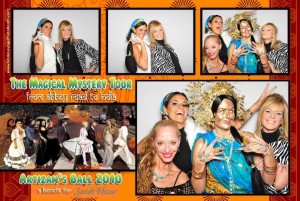I recently spent the day with Lila, a delightful two-year-old charmer who earns her own living simply by smiling and being cute. This got me thinking. If she’s only two and she’s already got a steady income, then it’s high time my eight-year-old started carrying his own weight.
If Koss got a job it would solve a lot of my problems. I keep telling my husband that driving 25 miles to Ojai for brunch doesn’t really count as a vacation. We’d be able to afford much better trips if Koss chipped in. Plus, let’s face it; unemployed kids are a pain the neck, with all the Lego’s and crushed popcorn underfoot and the dirty fingerprints on the walls. This is what jobless children do: they track mud and leaves into your house, they spill orange juice onto your keyboard, and they want play dates and snacks. Trust me, I see this kind of slovenly behavior every day.
Leeching off mom and dad is a way of life for unemployed children, and they’ve got no qualms about it whatsoever.
Enough of this freeloading, it’s time for Koss to get a job. He won’t even have to start at the bottom. Koss has already proved he’s management material. You know how schools and sports clubs try to shamelessly turn children into miniature salespeople? Well, instead of going out and doing his own wrapping paper pushing and raffle ticket racketeering, he’s conned me into doing it.
I’ve got to admit, Koss is an excellent supervisor. He’ll say, “Mom, have I sold enough wrapping paper to get the shiny spinney silly noisy flashy thingee that will break in the car on the way home from school yet?” Then he’ll give me the sweetest little smile that makes my heart melt, so I’ll call up yet another family member and con them into a few more rolls. Then he’ll add in the ultimate sales motivational tool–and give me a big fat hug.
I’m told that in the good old days, when a kid was old enough to make his parents crazy, you put ’em to work slopping hogs or tarring roofs, or knocking on doors collecting for newspapers.
But now, annoying kids are usually sent off to go throw a ball against a wall, or play computer games, which doesn’t do much to help my vacation fund, or our trade deficit with China, for that matter.
If ever there was ever a kid who could benefit from a solid day’s work in a Chinese Gap clothing factory, it’s Koss. Okay, maybe that’s too extreme. He might not make it in a Chinese sweatshop if they don’t serve Red Bulls and goldfish crackers. I’d settle for him putting in a solid day’s work at the Gap in the mall. The skills he’d learn folding all those waffle knit hoodies would sure come in helpful on laundry day.
Of course Koss’d be grumbling and complaining so much that he’d probably get fired the first hour. He’s eight, and already lagging with the work ethic. Maybe the Amish have the right idea, with their centuries-old tradition of having children tend to the fields and work in sawmills.
That’s the problem with trying to make kids work. They start out as babies. Adorable, sweet-smelling, cuddly babies to be sure, but keep in mind, babies are society’s most devious leeches. Think about it. A baby makes the tiniest little peep, and his every need is taken care of. Not only that, babies are praised–actually gushed over–for doing what comes naturally. Everyone oohs and ahs and claps their hands when they pass gas. They say, “what an angel you are” when all they do is fall asleep.
No wonder most eight year olds are so lazy, they’ve been lying around, eating, sleeping and playing since they day they were born.
But children are remarkably well suited for many careers. Why just the other day, my husband and I were out to dinner with our son, and when the server came to take our drink order, Koss spoke right up: “My dad will have a Firestone, mom will have a glass of merlot.” So you can see why we decided to promote him to vice president.











